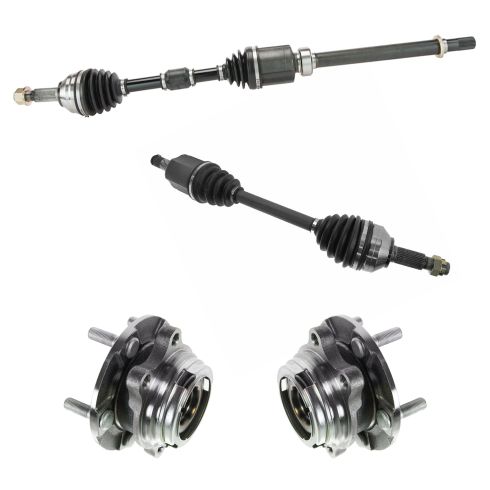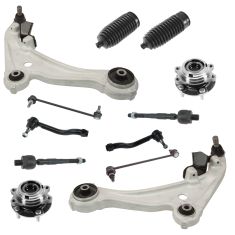1AAHK00079-Nissan Altima Front Driver & Passenger Side 4 Piece Drivetrain Kit TRQ CSA64104

Replaces
2012 Nissan Altima SL Automatic CVT Transmission Front Driver & Passenger Side 4 Piece Drivetrain Kit TRQ CSA64104

Product Reviews
Loading reviews
4.14/ 5.0
7
7 reviews
My online experience
June 20, 2019
Being a single parent of 4 girls, ordering parts for our car online was the best decision i made for my family. It was very affordable. Thank you!
2012 altima axles
June 28, 2019
Driver side axle and hubs were great. However the passenger side was a whole different story. First one I received leaked, second and third did as well. I knew it was the part the old one never leaked. I will say A1 definitely did what they could. My observation was the manufacturer turned it down a fraction of an inch to small. Just wish I didn't have to go through 6 quarts of cvt fluid at 10.50 a quart with no reimbursement.
Quality parts and great value.
May 8, 2020
Order arrived with somethings missing but with one call and no hassle at all my order was completely corrected. Very knowledgeable staff and the parts were right the first time. Really impressed with your customer service.
Leaking cv axle
March 16, 2021
Driver side went great no problems passenger side is leaking trying to get a replacement asap with the CVT fluid $11 a quart i hope they give me some compensation back for the 3 quarts ive already lost and probably going to loose more
August 9, 2021
Good quality... thanks
March 12, 2024
Worked out perfectly
As good as OEM !
August 20, 2024
Quality components - perfect fit! I had my mechanic install these components because I had 2 torn CV joint boots and was getting noise out of the wheel bearings. After installation, all the noises coming out of the front end were gone. Mechanic said he had no issues installing these components. I would also add that these components came quickly and at a great price!
Customer Q&A
Are these sets are for both driver and passenger side? And also are they fit on 3.5 SE altima as well?
February 19, 2019
10
This set is for both the driver and passenger side. This is only able to fit for Altimas with 2.5L engines.
February 19, 2019
Emma F
When will this be in stock again?
April 19, 2020
10
Hello,
We do not have an ETA for them to be back in stock at this time. Plesae add your email address to the box in the listing and we will be happy to email you as soon as they come in. Thanks!
April 20, 2020
Adam G
Will they parts still work on a 3.5L v6 Altima?
October 26, 2021
10
This part will not fit your vehicle, but we may have a part that is listed to fit.
Please enter your vehicle's year make and model in the search bar at the top of the page. This will display parts guaranteed to fit your vehicle. Just be sure to verify all of the information shown in the Vehicle Fit tab before ordering.
October 26, 2021
Ricale A
Nissan is a registered trademark of Nissan Motor Co., Ltd. 1A Auto is not affiliated with or sponsored by Nissan or Nissan Motor Co., Ltd.
See all trademarks.











